Can linux receive a USB flash drive?
You can connect a USB flash drive; but when using a USB flash drive under Linux, you need to mount it first. Because the Linux system treats all hardware devices as files, the device needs to be mounted to the system in order for the system to recognize the device; if it is not mounted, the hardware device can be viewed and found through the graphical interface system in the Linux system, but the command line The way cannot be found. Mounting is the process of associating the file directory of the Linux system itself with the file directory of the hardware device.
Note: When using a USB flash drive under Linux, you need to mount it first.
Why does linux need to be mounted?
Because the Linux system treats all hardware devices as files, when using hardware devices such as optical drives, they must be mounted. Load it into the system, only then can Linux recognize it.
All files are considered part of the file system, and they are organized into a tree directory structure with the root directory as the root. This is the meaning of "everything is a file" in the Linux system. In Linux, all hardware devices are treated as files, and each device has its own file system and directory structure.
When using these hardware devices in a Linux system, the hardware device can only be used by us if the file directory of Linux itself and the file directory of the hardware device are combined into one. The process of combining the two into one is called "mounting".
If it is not mounted, the hardware device can be found through the graphical interface system in the Linux system, but it cannot be found through the command line.
Mounting refers to connecting the top-level directory in the device file to a directory under the Linux root directory (preferably an empty directory). Accessing this directory is equivalent to accessing the device file.
To correct a misunderstanding, not any directory under the root directory can be used as a mount point. Since the mounting operation will hide the files in the original directory, neither the root directory nor the original directory of the system can be used as a mount point. The mount point will cause system abnormalities or even crashes. It is best to use a newly created empty directory as the mount point.
The /dev/ directory file in the root directory is responsible for all hardware device files. In fact, when the U disk is inserted into Linux, the system will indeed allocate a directory file (such as sdb1) to the U disk, which is located /dev/ directory (/dev/sdb1), but U disk data cannot be directly accessed through /dev/sdb1/. Accessing this directory will only provide you with some basic information about this device (such as capacity).
In short, when using any hardware device in the Linux system, the device file must be mounted with the existing directory file.
Linux system mounts U disk to copy files
Linux system uses U disk to transfer files when remote access is not possible (for example, the server has installed the system and has not yet assigned an IP) , you need to mount the U disk to a certain location in the system, and then use the cp command to copy the file. The brief steps are as follows:
1. Insert the U disk into the Linux computer and ensure that the U disk indicator light is on. of. Enter the main interface of the Linux system, press Ctrl Alt T to open the command window, first obtain advanced user permissions, enter the command: sudo -i (root account is not required), and enter the advanced user password after confirmation
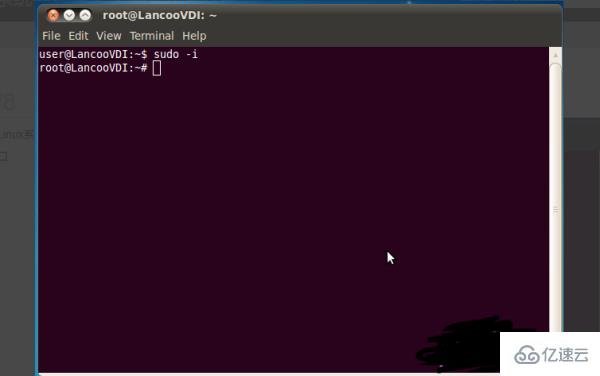
2. First use the fdisk -l command to check whether the U disk has been recognized and where the recognized U disk is.
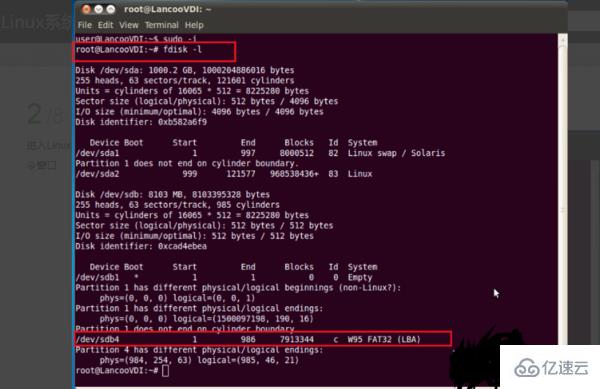
3. This time After accessing, you can see that the location of the U disk is /dev/Sdb4
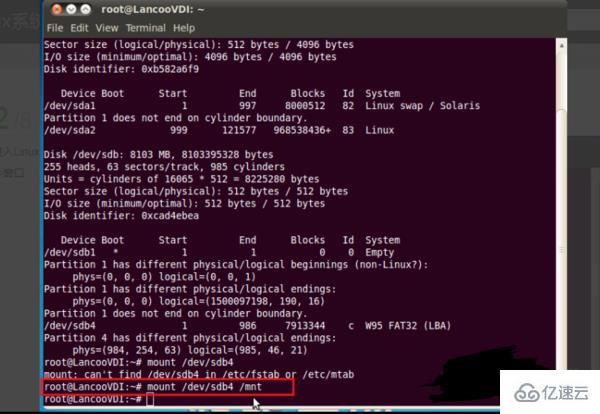
4. Enter the command to mount the U disk: mount /dev/sdb4 /mnt, and press Enter to mount. The U disk is loaded successfully, continue to enter: cd and press Enter, you can view the files under the U disk
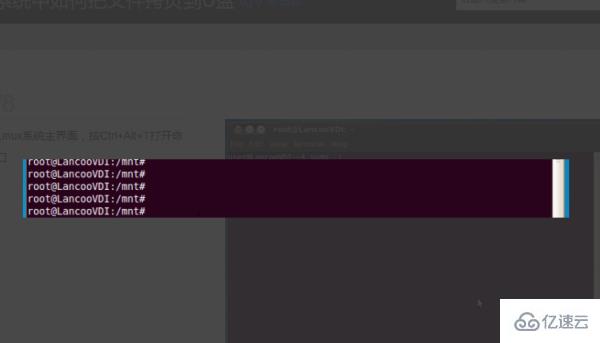
5. Now copy the 1.png file on the desktop to the U disk. Enter the command: cp /home/user/desktop/1.png /mnt, press Enter and wait for the copy to complete
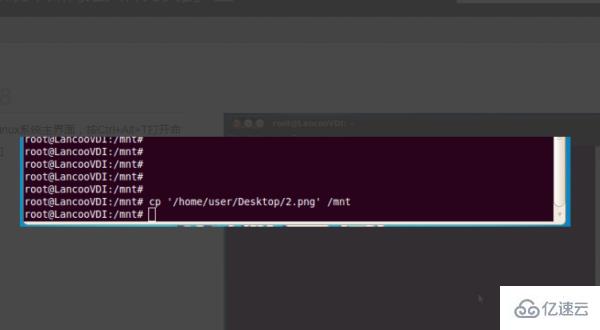
6. After the copy is completed, you need to exit the U disk and enter Command: umount /mnt (don’t forget~)
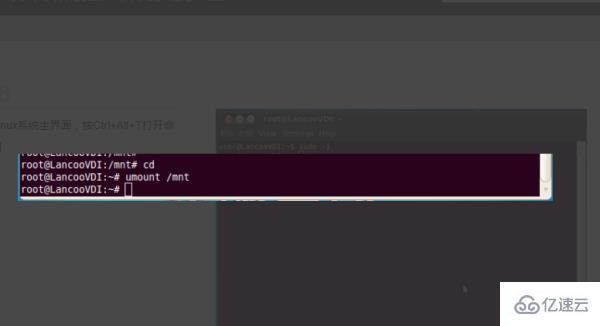
The above is the detailed content of Can linux receive a USB flash drive?. For more information, please follow other related articles on the PHP Chinese website!

Hot AI Tools

Undresser.AI Undress
AI-powered app for creating realistic nude photos

AI Clothes Remover
Online AI tool for removing clothes from photos.

Undress AI Tool
Undress images for free

Clothoff.io
AI clothes remover

Video Face Swap
Swap faces in any video effortlessly with our completely free AI face swap tool!

Hot Article

Hot Tools

Notepad++7.3.1
Easy-to-use and free code editor

SublimeText3 Chinese version
Chinese version, very easy to use

Zend Studio 13.0.1
Powerful PHP integrated development environment

Dreamweaver CS6
Visual web development tools

SublimeText3 Mac version
God-level code editing software (SublimeText3)

Hot Topics
 1652
1652
 14
14
 1413
1413
 52
52
 1304
1304
 25
25
 1251
1251
 29
29
 1224
1224
 24
24
 What computer configuration is required for vscode
Apr 15, 2025 pm 09:48 PM
What computer configuration is required for vscode
Apr 15, 2025 pm 09:48 PM
VS Code system requirements: Operating system: Windows 10 and above, macOS 10.12 and above, Linux distribution processor: minimum 1.6 GHz, recommended 2.0 GHz and above memory: minimum 512 MB, recommended 4 GB and above storage space: minimum 250 MB, recommended 1 GB and above other requirements: stable network connection, Xorg/Wayland (Linux)
 Linux Architecture: Unveiling the 5 Basic Components
Apr 20, 2025 am 12:04 AM
Linux Architecture: Unveiling the 5 Basic Components
Apr 20, 2025 am 12:04 AM
The five basic components of the Linux system are: 1. Kernel, 2. System library, 3. System utilities, 4. Graphical user interface, 5. Applications. The kernel manages hardware resources, the system library provides precompiled functions, system utilities are used for system management, the GUI provides visual interaction, and applications use these components to implement functions.
 vscode terminal usage tutorial
Apr 15, 2025 pm 10:09 PM
vscode terminal usage tutorial
Apr 15, 2025 pm 10:09 PM
vscode built-in terminal is a development tool that allows running commands and scripts within the editor to simplify the development process. How to use vscode terminal: Open the terminal with the shortcut key (Ctrl/Cmd). Enter a command or run the script. Use hotkeys (such as Ctrl L to clear the terminal). Change the working directory (such as the cd command). Advanced features include debug mode, automatic code snippet completion, and interactive command history.
 Where to write code in vscode
Apr 15, 2025 pm 09:54 PM
Where to write code in vscode
Apr 15, 2025 pm 09:54 PM
Writing code in Visual Studio Code (VSCode) is simple and easy to use. Just install VSCode, create a project, select a language, create a file, write code, save and run it. The advantages of VSCode include cross-platform, free and open source, powerful features, rich extensions, and lightweight and fast.
 How to check the warehouse address of git
Apr 17, 2025 pm 01:54 PM
How to check the warehouse address of git
Apr 17, 2025 pm 01:54 PM
To view the Git repository address, perform the following steps: 1. Open the command line and navigate to the repository directory; 2. Run the "git remote -v" command; 3. View the repository name in the output and its corresponding address.
 How to run java code in notepad
Apr 16, 2025 pm 07:39 PM
How to run java code in notepad
Apr 16, 2025 pm 07:39 PM
Although Notepad cannot run Java code directly, it can be achieved by using other tools: using the command line compiler (javac) to generate a bytecode file (filename.class). Use the Java interpreter (java) to interpret bytecode, execute the code, and output the result.
 What is the main purpose of Linux?
Apr 16, 2025 am 12:19 AM
What is the main purpose of Linux?
Apr 16, 2025 am 12:19 AM
The main uses of Linux include: 1. Server operating system, 2. Embedded system, 3. Desktop operating system, 4. Development and testing environment. Linux excels in these areas, providing stability, security and efficient development tools.
 How to run sublime after writing the code
Apr 16, 2025 am 08:51 AM
How to run sublime after writing the code
Apr 16, 2025 am 08:51 AM
There are six ways to run code in Sublime: through hotkeys, menus, build systems, command lines, set default build systems, and custom build commands, and run individual files/projects by right-clicking on projects/files. The build system availability depends on the installation of Sublime Text.




